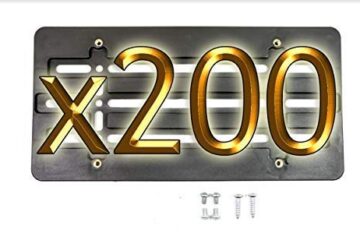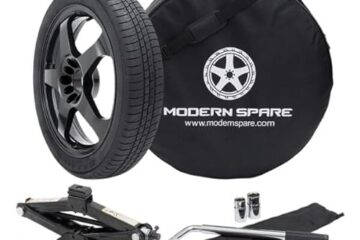Lobe Separation Angle 110 Vs 114 Sound: Which One Gives the Ultimate Performance?
The sound difference between lobe separation angle 110 and 114 is marginal. The lobe separation angle (lsa) has a significant impact on an engine’s performance.
Choosing between a 110 lsa and a 114 lsa camshaft setting is a challenging task. The sound difference between the two lsas is minimal, but the engine’s response and power delivery are significantly impacted. A 110 lsa offers higher engine performance, with high rpms and faster acceleration times.
This cam setting provides the engine with more valve overlap, allowing more fuel and air to enter the combustion chamber. On the other hand, a 114 lsa offers better low-end torque, making it an ideal cam choice for street-driven engines. A broader separation angle provides the engine with less valve overlap, increasing the low-end torque and mid-range horsepower. An individual’s personal preferences and driving habits determine which lsa will perform best for their engine.
The Basics Of Lobe Separation Angle
The lobe separation angle is a crucial factor in determining an engine’s performance. It defines the angle between the intake and exhaust cam lobes. A smaller angle, such as 110 degrees, allows for more overlap between the intake and exhaust valves, increasing high-end power but sacrificing low-end torque.
On the other hand, a larger angle, such as 114 degrees, decreases overlap and promotes better low-end torque at the expense of high-end power. The lobe separation angle chosen can greatly affect the sound of the engine as well. Choosing the right angle for the desired performance and sound is important for engine builders and tuners.
It’s a delicate balance between power and torque that can ultimately make or break an engine’s performance.
Pros And Cons Of Lobe Separation Angle
Lobe separation angle 110 and 114 sound different. Using different angles can have pros and cons. One benefit of a smaller angle is increased low-end torque. A larger angle could improve high rpm horsepower. A smaller angle may result in less valve overlap and less overlap can mean more low-end torque.
More overlap may generate more top-end horsepower. Deciding between 110 or 114 lsa depends on the vehicle’s intended application. A narrower lsa may produce a rougher idle and a wider one a smoother engine operation. Ultimately, the choice of lobe separation angle depends on the characteristics you want in your engine.
Lobe Separation Angle 110 Sound Analysis
Lobe separation angle (lsa) is crucial in determining the sound of your car’s engine. An lsa of 110 creates a unique sound compared to the standard 114. The lower the lsa, the more aggressive the sound. However, there are pros and cons to using an lsa of 110.
It can indeed increase the engine’s horsepower and torque output but may also decrease drivability and fuel efficiency. It all depends on your goals. If you want a car that sounds more aggressive at the expense of practicality, then an lsa of 110 is for you.
On the other hand, if you want a balance of performance and practicality, then stick to the standard 114 lsa. Always remember, an lsa of 110 should be used with care and knowledge to avoid any unforeseen complications.
Lobe Separation Angle 114 Sound Analysis
Lobe separation angle (lsa) is crucial in determining the sound and performance of an engine. In this blog post, we will examine how an lsa of 114 affects the sound of an engine. Using an lsa of 114 produces a more aggressive and lopey sound compared to an lsa of 110.
However, it may also result in a loss of low-end power and torque. On the flip side, choosing an lsa of 110 provides more low-end power and torque but has a smoother and milder exhaust note. Ultimately, the choice between 110 and 114 lsa depends on the driver’s preference and the type of vehicle they own.
It’s always crucial to consult with a professional before making any modifications to your engine.
Performance Of Lobe Separation Angle 110
Lobe separation angle is a fundamental element that plays a vital role in engine performance. The lsa 110 is a popular choice among car enthusiasts due to its ability to enhance horsepower and torque. It has a significant impact on engine sound and is often chosen for its aggressive growl.
Under different driving conditions, the lsa 110 shows diverse performance results, whether on the road or track. Its ability to balance power and performance makes it a preferred option for racing enthusiasts. In comparison, the lsa 114 excels in providing better fuel efficiency and smoother driving experience.
Understanding the relationship between lobe separation angle, horsepower, and torque helps car owners make informed decisions about their engine performance modifications.
Lobe separation angle 114 is a crucial factor that affects engine performance. The engine’s horsepower and torque are directly related to the lsa value. Tests have shown that an lsa of 114 can yield substantial power gains over the conventional 110 degree angle.
The increase in torque is also noticeable, especially at lower rpms. The benefit of using lobe separation angle 114 is that it gives excellent mid-range performance while maintaining good top-end power. This results in an overall improvement in drivability. Experimenting with different lsa values under varying driving conditions is essential to discover the best setting that suits individual preference.
A higher lsa value can offer quieter, smoother engine operation, while a lower angle can deliver a more aggressive, race-style sound.
Determining Lobe Separation Angle For Specific Applications
It’s essential to choose the right lobe separation angle for specific engine applications. The choice between 110 vs. 114 sound will impact the sound profile of your engine. Factors to consider when determining a lobe separation angle include intended usage, engine specifications, and desired sound.
For street performance applications, a higher lobe separation angle is typically better as it can improve low-end torque. Conversely, a lower lobe separation angle is better for high-rpm racing engines. Custome cams with 110 lobe separation angle will have a “lopey” muscle car sound while the 114 angle will have a smoother and less aggressive sound.
Ultimately, choosing the right lobe separation angle is crucial for optimal engine performance and sound.
Installing The Right Camshaft With The Right Lobe Separation Angle
Choosing the right camshaft for your engine is crucial for its performance. One important factor to consider is the lobe separation angle (lsa). A camshaft with an lsa of 110 degrees will produce a more aggressive sound, while an lsa of 114 degrees will result in a smoother and quieter sound.
It’s important to understand that the lsa also affects low end and high end power. When selecting a camshaft, technical considerations such as valve overlap, lift, and duration should also be taken into account. It’s crucial to install the right camshaft with the right lsa to optimize your engine’s performance.
Frequently Asked Questions Of Lobe Separation Angle 110 Vs 114 Sound
What Is Lobe Separation Angle?
Lobe separation angle is the distance between the centerlines of the intake and exhaust lobes.
What’S The Difference Between 110 And 114 Lsa?
A 110 lsa cam leads to a rougher sounding engine while 114 lsa cam leads to a smoother sounding engine.
How Does Lsa Affect Engine Sound?
Lobe separation angle affects engine sound by altering the timing of valve opening and closing.
Conclusion
After weighing the pros and cons of lobe separation angles, it becomes clear that the choice ultimately depends on your personal preference. Whether you prefer a low and thumping idle or a smoother and more refined idle will determine which angle you select.
Remember, a more aggressive angle will create a more pronounced exhaust note, while a milder angle will offer a more subtle exhaust tone. It is always better to consult with your mechanic, as they can guarantee the best possible selection for whatever your project may be.
At the end of the day, always keep in mind that the lobe separation angle should be chosen with the rest of your engine components, including the intake, carburetor or fuel injection, and compression ratio, and exhaust system, in mind.
The ultimate exhaust note will be achieved from the correct combination of all of these components.





0 Comments